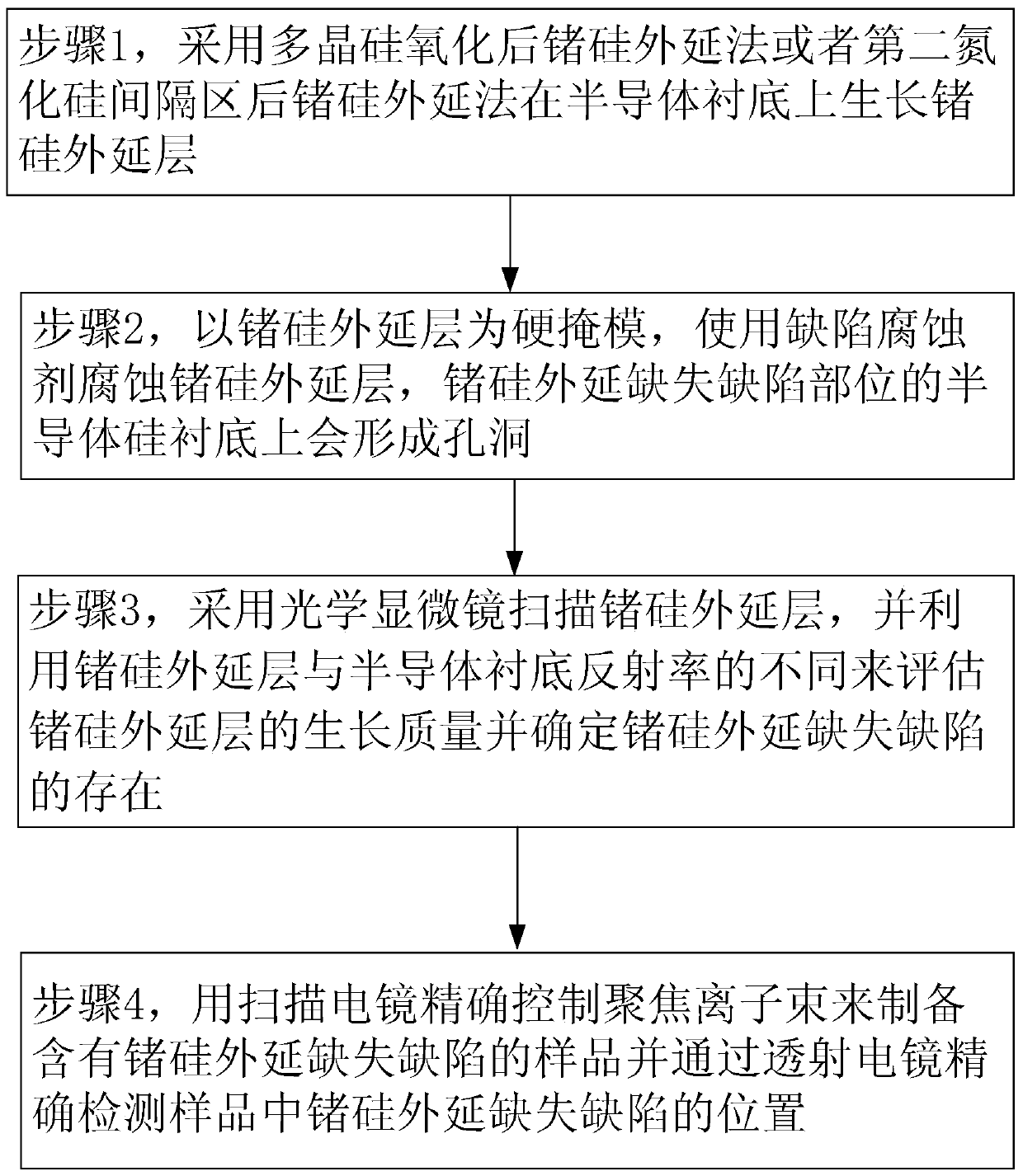Method for Detecting Missing Defects in Embedded SiGe Epitaxy
An embedded silicon germanium and silicon germanium epitaxy technology, which is applied in semiconductor/solid-state device testing/measurement, electrical components, circuits, etc., can solve the problems of CMOS device yield decline, time-consuming, and inability to observe defects, etc.
- Summary
- Abstract
- Description
- Claims
- Application Information
AI Technical Summary
Problems solved by technology
Method used
Image
Examples
Embodiment Construction
[0024] The present invention is described in detail below in conjunction with accompanying drawing:
[0025] Such as figure 1 Shown, a kind of method of detection embedded silicon germanium epitaxial missing defect of the present invention comprises the following steps:
[0026] Step 1, using silicon germanium epitaxy after polysilicon oxidation or silicon germanium epitaxy after the second silicon nitride spacer to grow a silicon germanium epitaxial layer on the semiconductor silicon substrate; preferably, the silicon germanium epitaxial layer has a thickness of 100- 1000 Angstroms. At this time, due to the influence of the embedded SiGe process, some regions on the silicon germanium epitaxial layer may have deletion defects, such as figure 2 There are missing defect sites 10 on the SiGe epitaxial layer shown in .
[0027] Specifically, the silicon germanium epitaxy method after polysilicon oxidation refers to the U-shaped silicon germanium epitaxy process after polysilic...
PUM
| Property | Measurement | Unit |
|---|---|---|
| thickness | aaaaa | aaaaa |
Abstract
Description
Claims
Application Information
 Login to View More
Login to View More - R&D
- Intellectual Property
- Life Sciences
- Materials
- Tech Scout
- Unparalleled Data Quality
- Higher Quality Content
- 60% Fewer Hallucinations
Browse by: Latest US Patents, China's latest patents, Technical Efficacy Thesaurus, Application Domain, Technology Topic, Popular Technical Reports.
© 2025 PatSnap. All rights reserved.Legal|Privacy policy|Modern Slavery Act Transparency Statement|Sitemap|About US| Contact US: help@patsnap.com



